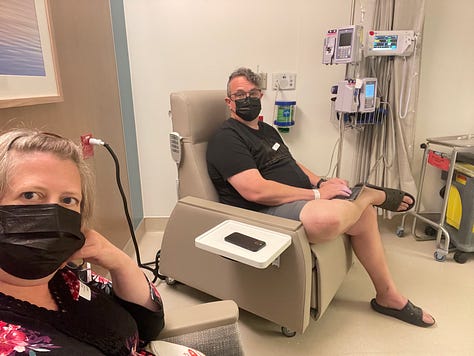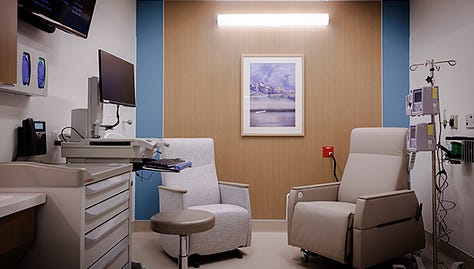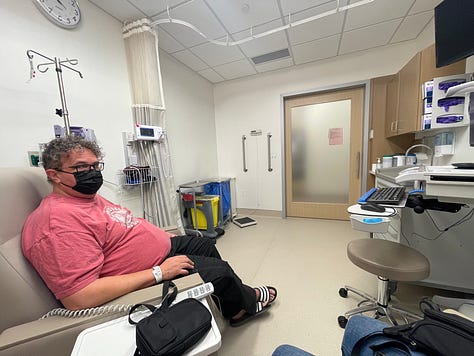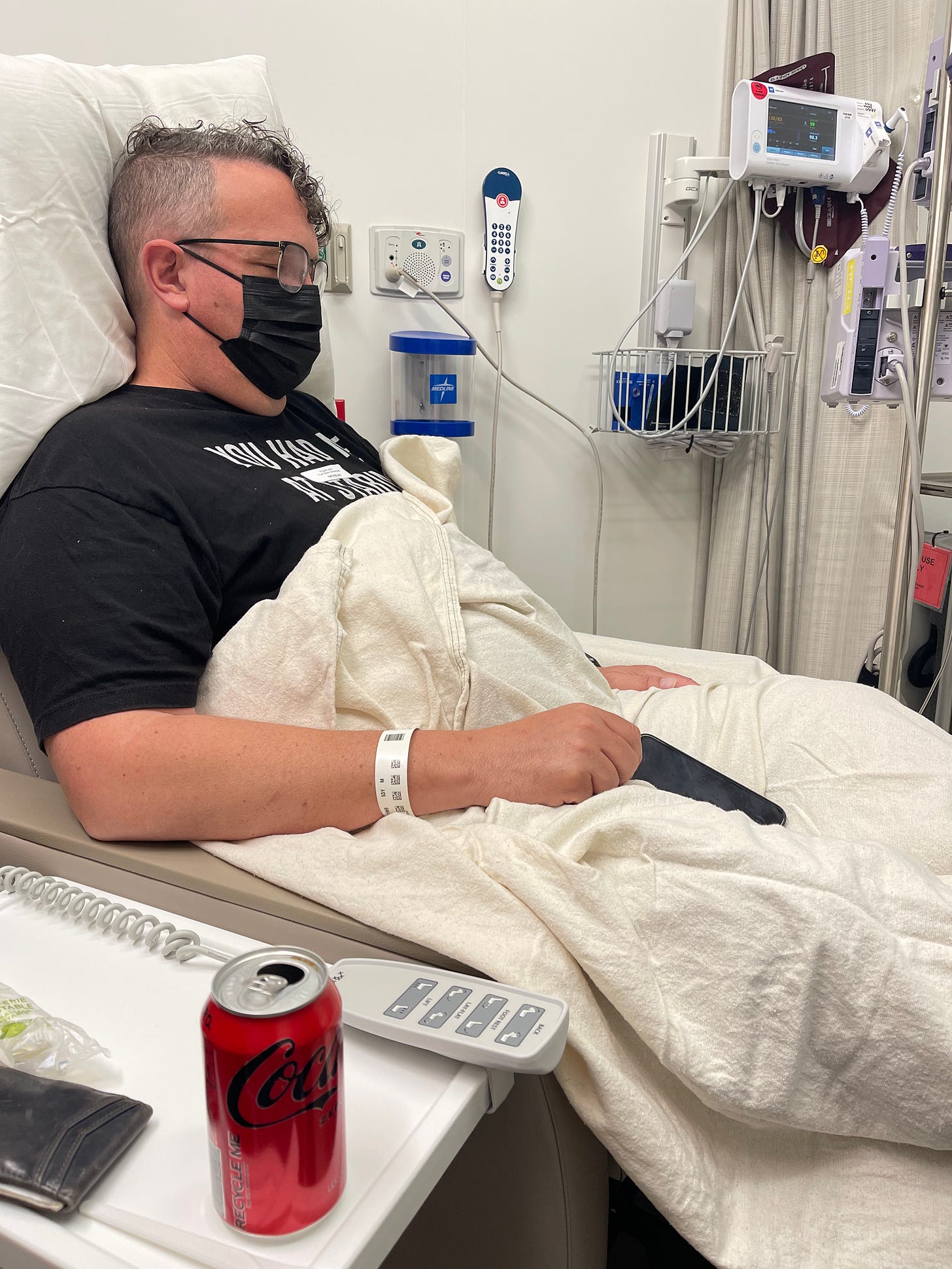Cancer Treatment Update #9 through #11
Plus a glimpse into Fred Hutch's Care Neighborhood approach that puts the patient at the center of treatment.
Hey there! If you’re new here, this is a cancer update for my husband, Bryan — not my usual Wednesday newsletter. For the backstory, you can see previous updates HERE. If you’re here for the non-cancer content, I’ll be back on Wednesday with The Usual.
Treatment Update
I don’t have much to report, but it’s been a minute since I updated on Bryan’s cancer journey. This past Monday, October 9th, was Bryan’s second-to-last scheduled chemo appointment. By November, after his final treatment on October 23rd, this might all be behind us. Fingers crossed.
On Halloween, Bryan has another CT scan “to see if there’s anything scary in there,” as he says. Funny guy. We’re dropping spooky cancer puns for Halloween now, I guess. Trick or treat!
Bryan had a follow-up with a pulmonary specialist after his embolism scare that landed him in the hospital for three days. He confirmed the embolisms were very serious and he was lucky he didn’t die. He also clarified they were related to his surgery, not to having cancer, and that he’ll likely be on blood thinners for six months to a year.
Here’s an extremely uneventful car video from our 10th treatment commute (September 25th), posted because of its classic Zug banter. Content warning: I spend a greater than usual amount of camera time using my tongue to dig granola out from my teeth. Because I’m nothing if not authentic.
Fred Hutch Care Neighborhoods
I can’t say enough about how wonderful our experience has been with Fred Hutch, and I’m talking about from the moment I landed on their website to inquire about getting a treatment plan second opinion, back in February:
You are at the center of everything we do at the Colorectal Cancer Specialty Clinic at Fred Hutchinson Cancer Center. Here, we surround you with a team of specialists who work together closely to provide expertly targeted, complete care and compassionate support throughout your treatment and beyond.
We guide you every step of the way, combining our deep clinical expertise in colorectal cancer with a commitment to meet your unique needs.1
My entire career has been in marketing and communications. I write copy like this for clients and nonprofit organizations. Even with my experience and background knowing “how the sausage is made,” these opening paragraphs made me feel loved, safe, and seen.
In contrast, the surgeon we met with at the first facility was the Louis Litt of colorectal surgeons.2 The website copy for that medical center’s colorectal center was all about their award winning expertise and decades of experience. Our first impression of them was not great, and it was an easy decision to move on from them.
The Care Neighborhood Concept
I recently learned that the particular building Bryan’s been getting chemo in since May only opened March. And now that I think about it, I do remember when we first started visiting, some areas in the main lobby were blocked off for construction. I now know it was the skybridge leading to the new building.
For each treatment, we’re greeted by a medical assistant (👋 Hi, Philip!) who shows us to a private room and takes all of Bryan’s vitals. This private room is comfortable, with rocking chairs and dimming lights. We never have to leave this room, except to use the bathroom. For any appointments we have during Bryan’s hours-long infusions, the specialist comes to us in this comfortable, private room.



This means our time spent on campus is reduced, because everyone comes to us while Bryan is receiving his infusion, and we don’t have to wait until the drip is done to visit other providers in the building. We’ve been visited by the nutritionist, our insurance liaison, an acupuncturist, the oncology care team, the pharmacist, and more, all while Bryan is nestled under a cozy blanket in his reclining chair.
Fred Hutch piloted this Care Neighborhood concept in it’s original building for three years prior opening a facility especially designed for this type of service delivery. As they designed their new patient-centered facilities, they leaned heavily on a patient advisory board to help shape what it would look and feel like:
To ensure patients’ needs were being met in this new clinical space, Fred Hutch enlisted a team of patient advisors who reviewed floor plans and provided critical feedback that helped shape the building’s design.
“Of all the volunteer work I’ve done, this was the most rewarding,” said design team member Steve Lovell of Seattle, a former Alaska Airlines director who received a bone marrow transplant at Fred Hutch for his myelodysplastic syndrome in 2010. “Rather than just asking patients and families questions, Fred Hutch actually brought us in. We were an integral part of the clinic design team – very hands-on -- and were able to convey valuable information. I think it made for a better experience for everybody.”3
This level of comfort, along with the ease of parking in their fancy robot parking garage, has made a shitty situation a little more tolerable.
Happy to answer any questions you might have about Bryan’s treatment, the facilities, or human-centered design.
Fred Hutch’s colorectal cancer page.






Fingers and toes crossed. Sending lots of love! ❤️
Sending prayers and positive thoughts for great news at the end of the month!!!